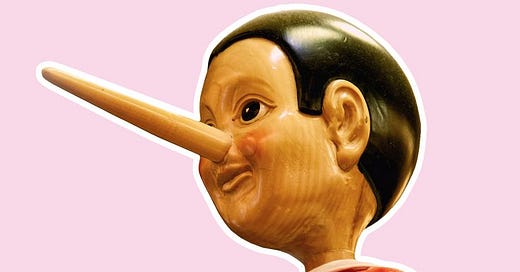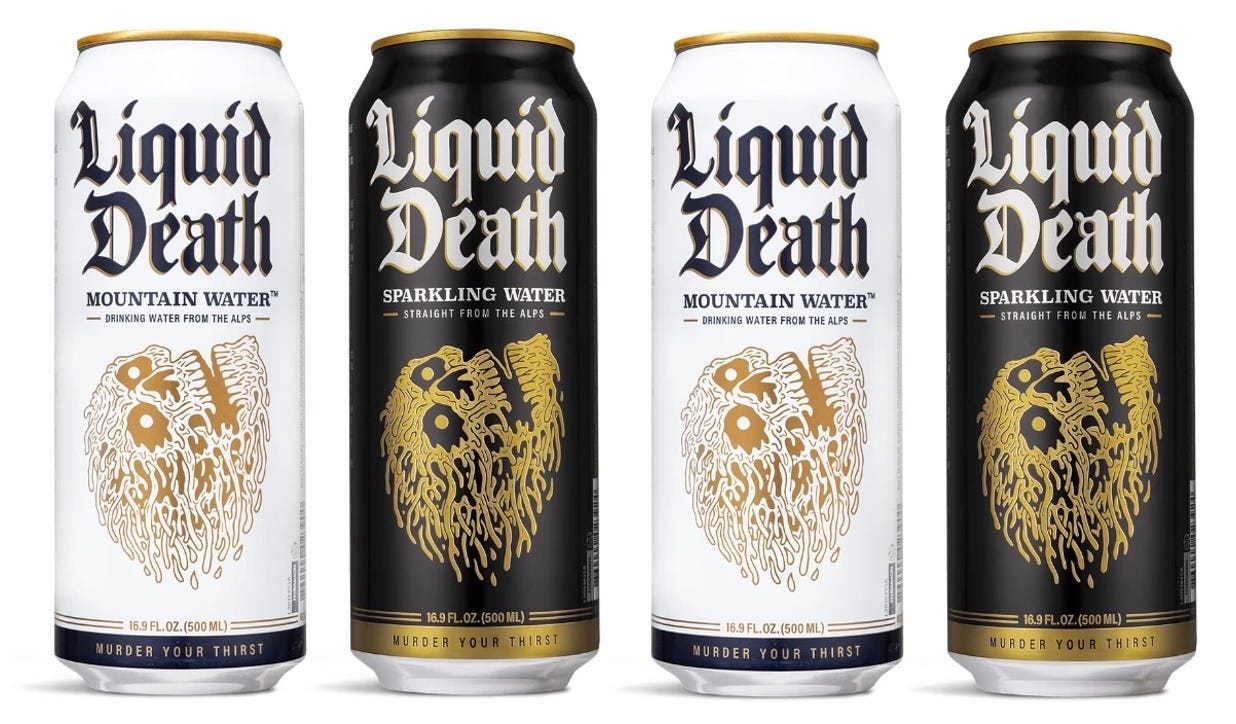Humans are Terrible Liars
Especially your customers. Here's how to get real, actionable insights.
Me to my five-year-old this morning: "Your toothpaste is really watery. Did you put water into your toothpaste bottle?"
Him: "Yes."
Me: "Why?"
Him: "I don't know."
The parent in me immediately sighed—but the marketer in me immediately perked up.
Here’s why → This tiny bathroom exchange perfectly captures why focus groups routinely fail, why customer surveys mislead us, and why the most well-intentioned market research often sends brands down the wrong path entirely.
Whether you're five years old or fifty years old, humans are ABSOLUTELY HORRIBLE at explaining their own decisions.
We just are—it's how our brains work. They make most decisions subconsciously, then create rational explanations after the fact.
The "I Don't Know" Problem
My son added water to his toothpaste for a reason. Maybe the consistency felt wrong. Maybe he was experimenting. Maybe he wanted to make it last longer after I told him to use less. Maybe he just liked watching the water swirl in.
But when pressed to articulate that reason?
I don't know.
This is the fundamental flaw with asking people what they want, why they bought something, or what would make them buy more. We're asking them to reverse-engineer decisions that happened subconsciously, emotionally, or through a complex web of micro-influences they can't possibly untangle.
And then we build entire brand strategies around their best guesses.
No wonder so many products flop.
Introducing: The Action-Over-Answer Framework
Instead of asking customers what they think, smart brands watch what they do. Instead of focusing on their explanations, we focus on their behaviors.
Here's my Action-Over-Answer Framework for getting real customer insights:
1. Watch for the “Wrong” Moments
Look for the small, seemingly irrational things your customers do with your product.
The workarounds.
The modifications.
The "wrong" ways they use it.
These behaviors reveal unmet needs they can't articulate.
2. Follow the Friction Points
Notice where customers get stuck, confused, or frustrated—even if they don't complain about it.
That hesitation at checkout.
The questions they ask your customer service team.
The features they ignore completely.
3. Study the Success Stories
When customers become obsessed with your brand, don't just ask them why.
Watch how they discovered you (track referral sources, social mentions, search terms).
Look at when they decided to purchase (analyze abandoned cart recovery data, time between first visit and purchase).
See what they do with your product that others don't (review usage analytics, customer photos, support tickets).
4. Test Behavior, Not Opinions
Instead of asking "Would you buy this?" create low-stakes ways to see if they actually will.
Landing page signups
Pre-order interest
Email list subscriptions
Actions reveal truths that words obscure.
Brands Getting This Right
Liquid Death didn't succeed because people said they wanted water in a can that looked like beer. They succeeded by following Step 1 of the framework—watching for 'wrong' moments. They noticed the seemingly irrational behavior of people feeling awkward drinking water at parties, wanting to fit in while staying sober.
Airbnb didn't succeed because people said they wanted to stay in strangers' homes. They followed Step 2—following friction points. They noticed the real frustrations with hotels: high costs, lack of local experience, rigid check-in times. They built their platform around solving those specific pain points people were already experiencing.
Boy Smells didn't create gender-neutral candles because focus groups demanded them. They followed Step 3—studying success stories. They watched how existing customers were already buying 'feminine' candles regardless of their gender, then built a brand around that existing behavior.
Dollar Shave Club didn't launch because focus groups said they wanted cheaper razors delivered monthly. They followed Step 4—testing behavior, not opinions. Instead of asking people 'Would you subscribe to razor delivery?' they simply put up a landing page and a viral video to see if people would actually sign up. The behavior spoke louder than any survey could.
They all followed the same principle: behavior beats explanation every single time.
Your Turn: The Toothpaste Test
This week, I challenge you to find your brand's "toothpaste moments."
Look for the small, weird things your customers do that they probably can't explain. The modifications they make. The problems they solve in ways you never intended. Check these three places first:
Your customer service logs (What questions do they ask repeatedly?)
Social media mentions (How do they actually use/display your product?)
Return/refund reasons (What's not working the way they expected?)
Then, build your next product innovation around those behaviors, not their explanations of those behaviors.
Because here's what I've learned from five years of parenting and fifteen years of marketing:
The most honest answer is often "I don't know."
And the most valuable insights come from watching what happens next.
What "I don't know" customer behaviors have you noticed in your business? Hit reply and tell me—I love hearing about these moments!
P.S. I'm currently testing whether AI is actually more honest than real customers when it pretends to be them. The early results are... wild.
Spoiler: The AI customers gave me answers that were both more articulate AND more accurate than the real ones. Which proves my "humans are terrible at explaining decisions" theory even more than I expected.
Want more content like this? Join The Branding Newsletter, my community of hundreds of the most influential founders, CEOs, marketers, and branders in the world.








